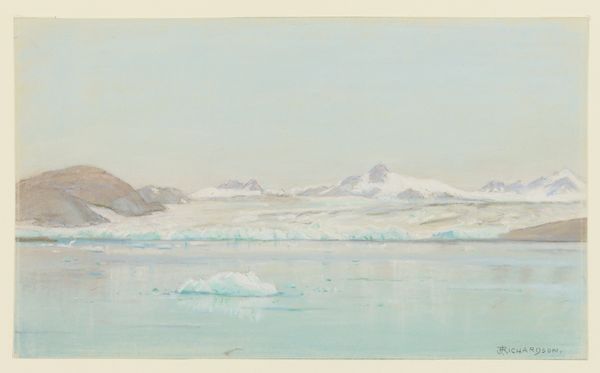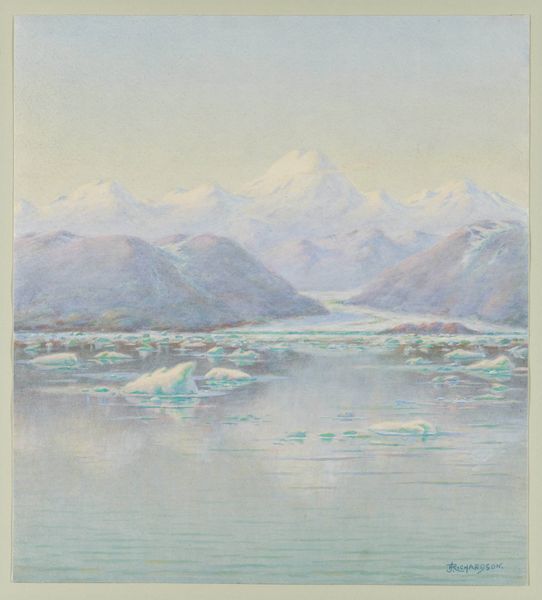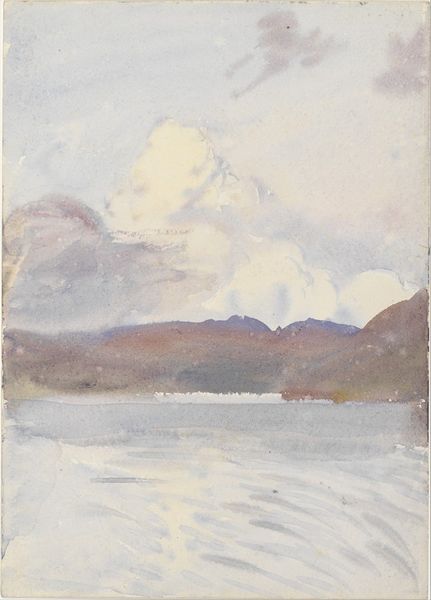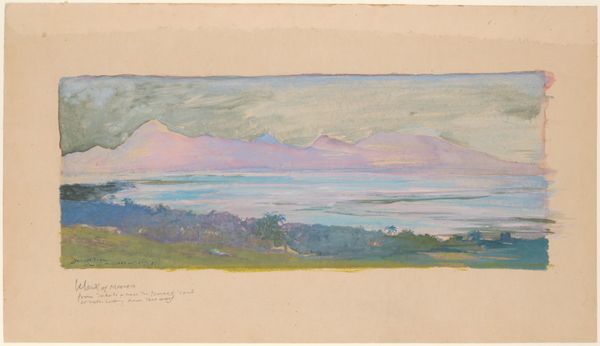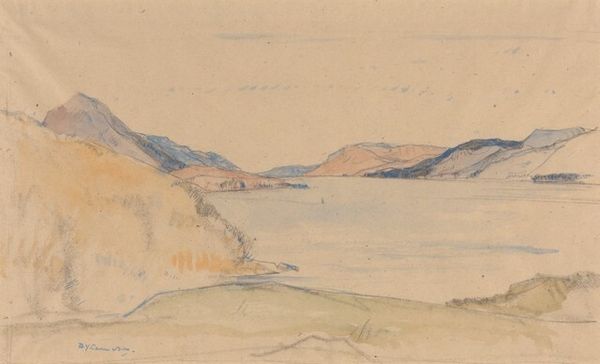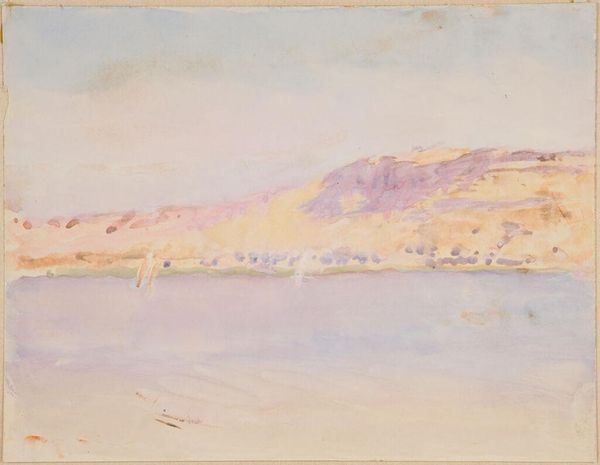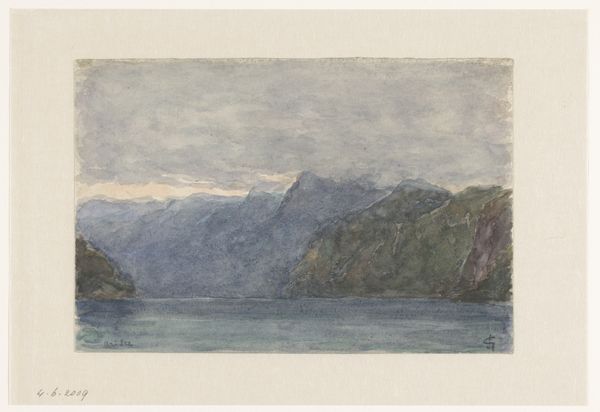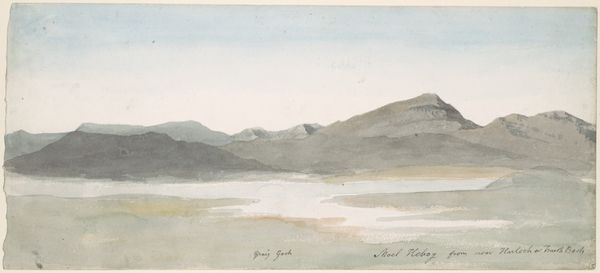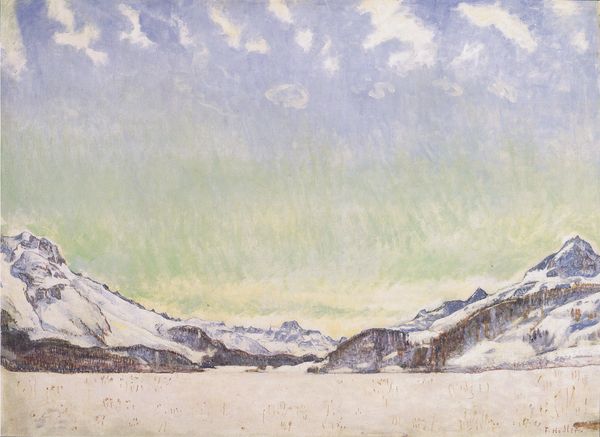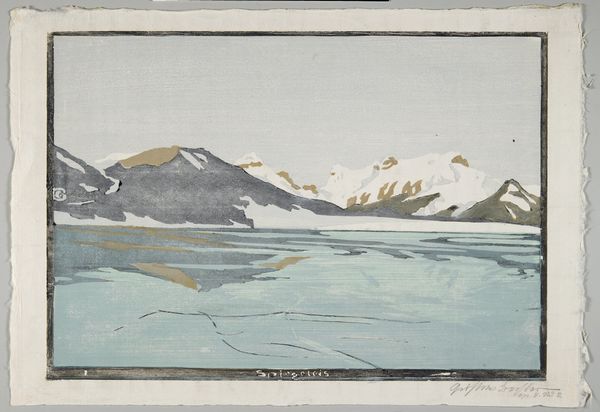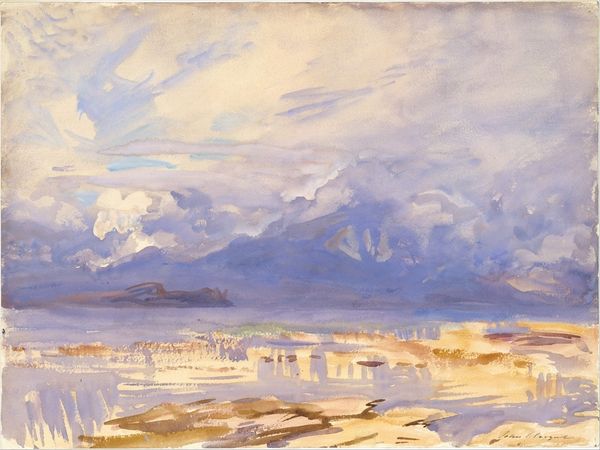
Dimensions: 9 x 14 1/4in. (22.9 x 36.2cm)
Copyright: Public Domain
Theodore J. Richardson created "Taku Glacier" using watercolor and graphite, during a time of growing interest in landscape and exploration. The late 19th century was an era defined by the expansion of industrialization and the exploitation of natural resources, so this delicate scene of the Alaskan wilderness seems especially poignant. Richardson, like many artists of his time, turned to landscape painting as a means of expressing the sublime beauty of the natural world. However, this representation cannot be separated from its cultural context. It invokes questions about the relationship between exploration and the romanticizing of uninhabited landscapes, often overshadowing the experiences and perspectives of indigenous communities. As we observe the serene surface of the glacier-filled scene, we might also reflect on the changing climate. These frozen landscapes are potent symbols of a planet undergoing rapid and human-caused transformation. The painting serves as a reminder of the complex interplay between beauty, history, and the urgent need for environmental consciousness.
Comments
minneapolisinstituteofart almost 2 years ago
⋮
Minnesota artist Theodore Richardson fell in love with Alaska and made numerous trips to the state to depict its environment and geography. This watercolor depicts a tidewater glacier that is recognized as the deepest, thickest (4,845 feet) alpine temperate glacier in the world. It has been in retreat since 2019 because of climate change. Richardson adored hiking through Alaskan forests and along the coast and often made his watercolors outdoors and right on the spot. That is likely the case with this watercolor.
Join the conversation
Join millions of artists and users on Artera today and experience the ultimate creative platform.
